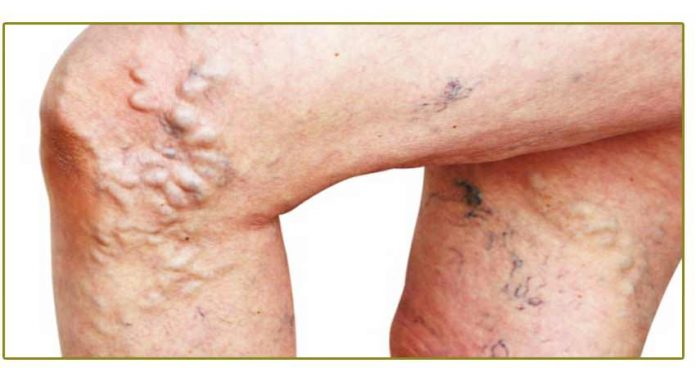What are varicose veins?
Varicose veins are twisted, enlarged veins near the surface of the skin. They are most common in the legs and ankles. They usually aren’t serious, but they can sometimes lead to other problems.
What causes varicose veins?
Varicose veins are caused by weakened valves and veins in your legs.Normally, one-way valves in your veins keep blood flowing from your legs up toward your heart. When these valves do not work as they should, blood collects in your legs, and pressure builds up. The veins become weak, large, and twisted.
Varicose veins often run in families. Aging also increases your risk.
Being overweight or pregnant or having a job where you must stand for long periods of time increases pressure on leg veins. This can lead to varicose veins.
What are the symptoms?
Varicose veins look dark blue, swollen, and twisted under the skin. Some people do not have any symptoms. Mild symptoms may include:
- Heaviness, burning, aching, tiredness, or pain in your legs. Symptoms may be worse after you stand or sit for long periods of time.
- Swelling in your feet and ankles.
- Itching over the vein.
More serious symptoms include:
- Leg swelling.
- Swelling and calf pain after you sit or stand for long periods of time.
- Skin changes, such as:
- Color changes.
- Dry, thinned skin.
- Inflammation.
- Scaling.
- Open sores or you may bleed after a minor injury.
Varicose veins are common and usually aren’t a sign of a serious problem. But in some cases, varicose veins can be a sign of a blockage in the deeper veins called deep vein thrombosis. If you have this problem, you may need treatment for it.
How are varicose veins diagnosed?
Your doctor will look at your legs and feet. Varicose veins are easy to see, especially when you stand up. Your doctor will check your legs for tender areas, swelling, skin color changes, sores, and other signs of skin breakdown.
If you have signs of a deep vein problem or you plan to have treatment for a varicose vein, you may need more tests.
How are they treated?
Home treatment may be all you need to ease your symptoms and keep the varicose veins from getting worse.
You can:
- Wear compression stockings.
- Prop up (elevate) your legs.
- Avoid long periods of sitting or standing.
- Get plenty of exercises.
If you need treatment or you are concerned about how the veins look, your options may include:
- Sclerotherapy to close off the vein.
- Laser treatment to destroy the vein.
- Radiofrequency treatment to close off the vein.
- Surgery to tie off or remove the vein.
Dr. Bashar A. Saleh
General & Laparoscopic Surgery Consultant
Bahrain Specialist Hospital
Email: bashar@bsh.com.bh

